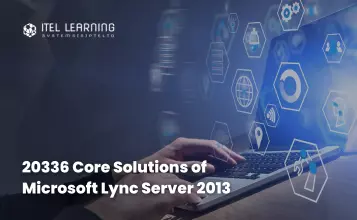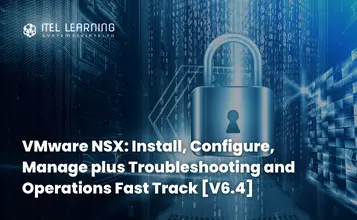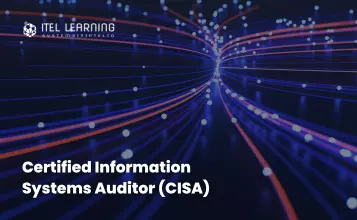Overview
This instructor-led course teaches IT professionals how to plan, design, deploy, configure, and administer a Microsoft Lync Server 2013 solution. The course emphasizes Lync Server 2013 Enterprise Unified Communications features with particular emphasis on coexisting with and migrating from legacy communication services. The labs in this course create a solution that includes IM and Presence, Conferencing, and Persistent Chat. This course helps the participants prepare for Exam 70-336.
Prerequisites
- Experience managing software in a Windows 2008 R2 enterprise server or Windows Server 2012 environment
- Experience managing an application remotely using Windows PowerShell 3.0
- Familiarity with managing and configuring databases
- An introduction to Active Directory Domain Services
Who Should Attend?
This course is intended for IT consultants and telecommunications consulting professionals who design, plan, deploy, and maintain solutions for unified communications (UC). Participants should be able to translate business requirements into technical architecture and design for a UC solution.
Course Outline
- Overview of Lync Server 2013 Architecture
- Overview of Lync Server 2013 Core Capabilities
- Introduction to the Lync Server 2013 Design Process
- Assessing Infrastructure
- Requirements and Updating the Design
- Planning for all Microsoft Solutions Framework Phases
- Planning Infrastructure Requirements for Lync Server 2013
- Using the Lync Server 2013 Planning Tool
- Using Topology Builder
- Planning the Server Infrastructure
- Designing Documentation Using Microsoft Office
- Managing Lync Server 2013
- Introduction to Role Based Access Control
Lab: Configuring Users and Rights in Lync Server 2013
- Prepare for Client Deployment
- Deploy and Manage Clients
- Prepare for Device Deployment
- Deploy and Manage IP Phones
- Introduction to Conferencing in Lync Server 2013
- Designing for Audio/Video and Web Conferencing
- Dial-In Conferencing in Lync Server 2013
- Managing and Administering Сonferencing
Lab: Conferencing in Microsoft Lync Server 2013
- Conferencing and External Capabilities of Lync Server 2013
- Planning for IM and Presence Federation
- Designing Edge Services
- Overview of Persistent Chat Architecture in Lync Server 2013
- Designing Lync Server 2013 Persistent Chat
- Deploying and Configuring Lync
- Server 2013 Persistent Chat
- The Archiving Service
- The Monitoring Service
- Configuring Archiving and Monitoring
Lab: Configuring and Using Archiving and Monitoring in Lync Server 2013
- Introduction to Lync Server 2013 Troubleshooting Tolls
- Understanding Lync Server 2013 Operational Tasks
- Developing Lync Server 2013 Troubleshooting Techniques
- High Availability in Lync Server 2013
- Configuring High Availability in Lync Server 2013
- Planning for Load Balancing
- Designing Load Balancing
- Disaster Recovery in Lync Server 2013
- Tools for Backing Up and Restoring Lync Server 2013
- Critical Lync Server 2013 Data to Back Up and Restore
- Critical Lync Server 2013 Data to Export and Import
- Designing Branch Site Resiliency
- Overview of Coexistence and Migration
- Migration Steps
- Planning for Clients and Devices
- Designing a Client Migration and Device Migration Strategy








